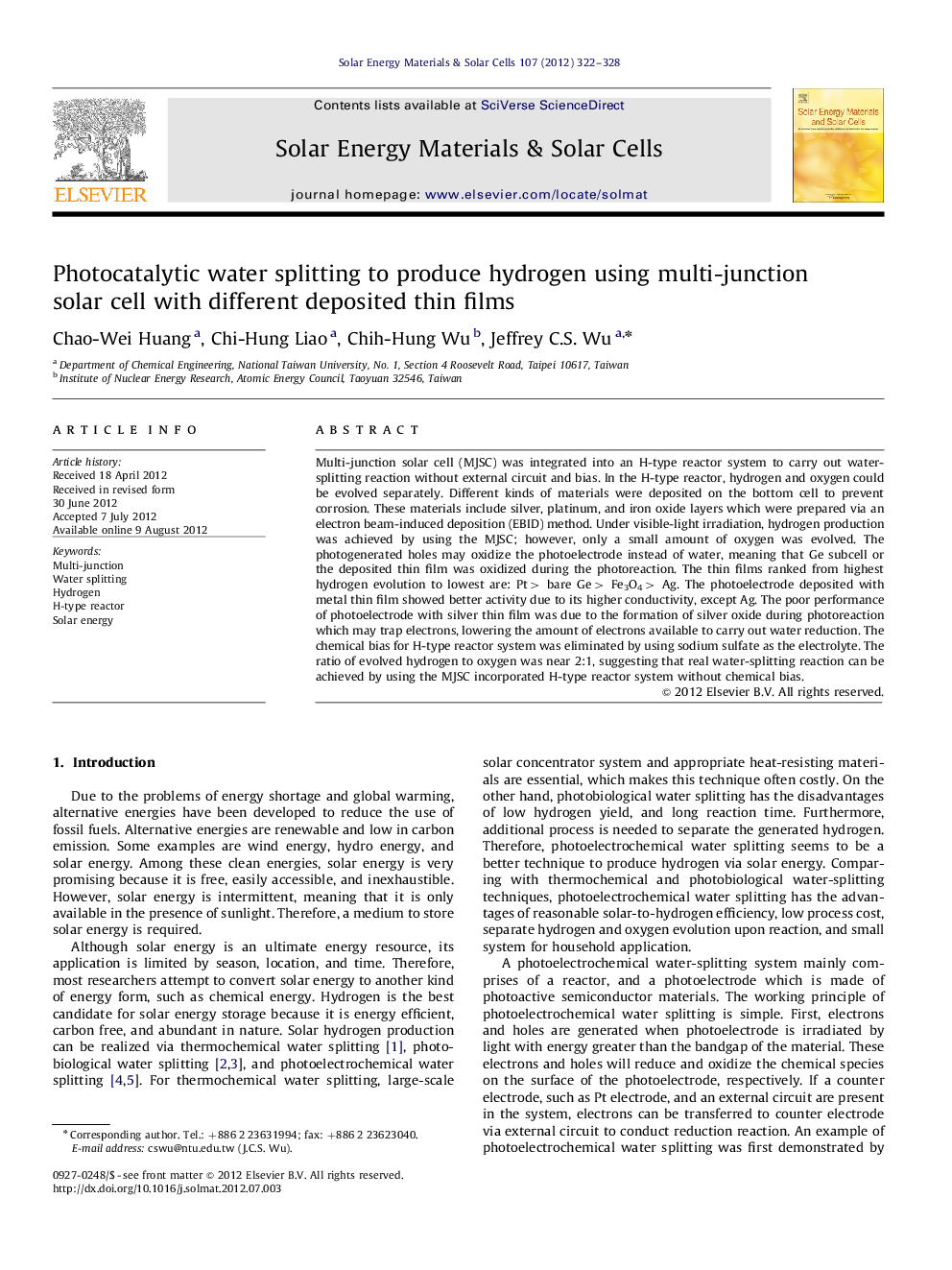| کد مقاله | کد نشریه | سال انتشار | مقاله انگلیسی | نسخه تمام متن |
|---|---|---|---|---|
| 78925 | 49344 | 2012 | 7 صفحه PDF | دانلود رایگان |

Multi-junction solar cell (MJSC) was integrated into an H-type reactor system to carry out water-splitting reaction without external circuit and bias. In the H-type reactor, hydrogen and oxygen could be evolved separately. Different kinds of materials were deposited on the bottom cell to prevent corrosion. These materials include silver, platinum, and iron oxide layers which were prepared via an electron beam-induced deposition (EBID) method. Under visible-light irradiation, hydrogen production was achieved by using the MJSC; however, only a small amount of oxygen was evolved. The photogenerated holes may oxidize the photoelectrode instead of water, meaning that Ge subcell or the deposited thin film was oxidized during the photoreaction. The thin films ranked from highest hydrogen evolution to lowest are: Pt> bare Ge> Fe3O4> Ag. The photoelectrode deposited with metal thin film showed better activity due to its higher conductivity, except Ag. The poor performance of photoelectrode with silver thin film was due to the formation of silver oxide during photoreaction which may trap electrons, lowering the amount of electrons available to carry out water reduction. The chemical bias for H-type reactor system was eliminated by using sodium sulfate as the electrolyte. The ratio of evolved hydrogen to oxygen was near 2:1, suggesting that real water-splitting reaction can be achieved by using the MJSC incorporated H-type reactor system without chemical bias.
Multi-junction solar cells are promising photoelectrodes to enhance water-splitting efficiency. Triple-junction solar cells is installed in the H-type photoreactor that hydrogen and oxygen can be evolved separately. The chemical bias is eliminated by using sodium sulfate as electrolyte. The amount of evolved hydrogen and oxygen is near the stoichiometric ratio, 2:1.Figure optionsDownload as PowerPoint slideHighlights
► Water splitting is performed using multi-junction solar cells (MJSC) in an H-type photoreactor.
► MJSC contains InGaP, GaAs, and Ge sub-cells to convert solar energy to electricity with high efficiency.
► Hydrogen and oxygen could be evolved separately in the photoreactor without chemical bias.
Journal: Solar Energy Materials and Solar Cells - Volume 107, December 2012, Pages 322–328